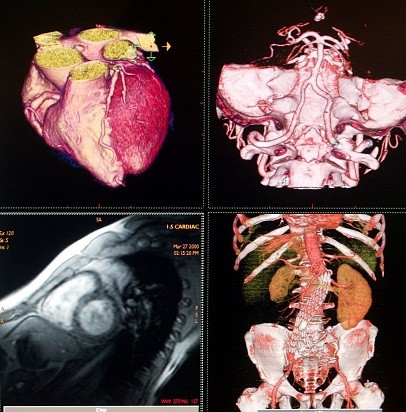Scientists might have finally found a way how you can live longer -- by killing your digital twin.
Your digital twin lives in a computer, and doctors can administer all forms of drugs, and perform medical surgeries and processes to your twin to find out how your body can survive before they do it to you.
In life, the worst things can happen.

Let's say you have a rare and fatal disease, and without any trace of hesitation, you ask your doctor to treat you. But here is the catch: the only available treatment is a high-risk procedure, meaning your chances of survival are pretty low.
But what if your doctor informs you that you can clone yourself so that, in a way, they can figure out a way to save you?
Scientist's Take on the Digital Twin
For the first time, the world of science technology adapted the study and intertwined it with its theories.
EMPA recently stated that researchers could successfully create a digital twin with the help of science and computer, creating an exact copy of each patient in digital form.
By working on a non-conscious, digital copy of a person's body, scientists and doctors may collaborate to experiment on the digital patient to help with their diagnosis, treatment, and, if possible, a cure.
Researchers are incorporating data sciences and computers to fully develop a complete "digital twin" of individual patients so that they may perform sensitive therapies, trial-and-error dosages, and complex surgeries with little to no survival rates.
A Digital Twin Can Predict Possible Outcomes
With the help of substantial advances in modern medicine, scientists and doctors have had the chance to develop endless innovative ideas and practices. To this day, their contributions are available to promote enhanced quality of life for everyone.
The digital twin is an excellent technique that can help save the lives of future patients.
Scientists don't necessarily aim to kill your digital twin, but if it happens, they can bring it back to life and start all over with their trial-and-error procedures.
The researchers use mathematics as their basis for the digital twin. This specific study requires a wide range of variables such as age, lifestyle, gender, ethnicity, blood type, height, weight, and other detailed information to create the exact digital copy of the patient.
According to EMPA, Thijs Defraeya, team leader of EMPA's "Biomimetic Membranes and Textiles," stated that to create an avatar, one thing they need to consider is how the drug will be metabolized in the body while the treatment is ongoing. Another aspect to consider is how much of the medication reaches the patient's pain center in the brain.
Digital Twin Patients May Offer Feedback
Patients who have developed digital twins may give their feedback on the treatments. These copies can be updated with the actual patients' input based on their experience.
In the future, sensors would be available to sync the actual patient's vital signs such as heartbeat, blood pressure, and oxygen level to their digital twin in real-time.
Because of this new technology, the world of medicine will be revolutionized. Before doing procedures and giving medication to patients, doctors may test it out to their digital twin to look out for each course's side effects and possible outcomes.
Related Article : Drug Company Amgen Launches Online Journal For Studies That Attempt To Replicate Experimental Results
This article is owned by Tech Times
Written by Fran Sanders

![Apple Watch Series 10 [GPS 42mm]](https://d.techtimes.com/en/full/453899/apple-watch-series-10-gps-42mm.jpg?w=184&h=103&f=9fb3c2ea2db928c663d1d2eadbcb3e52)


